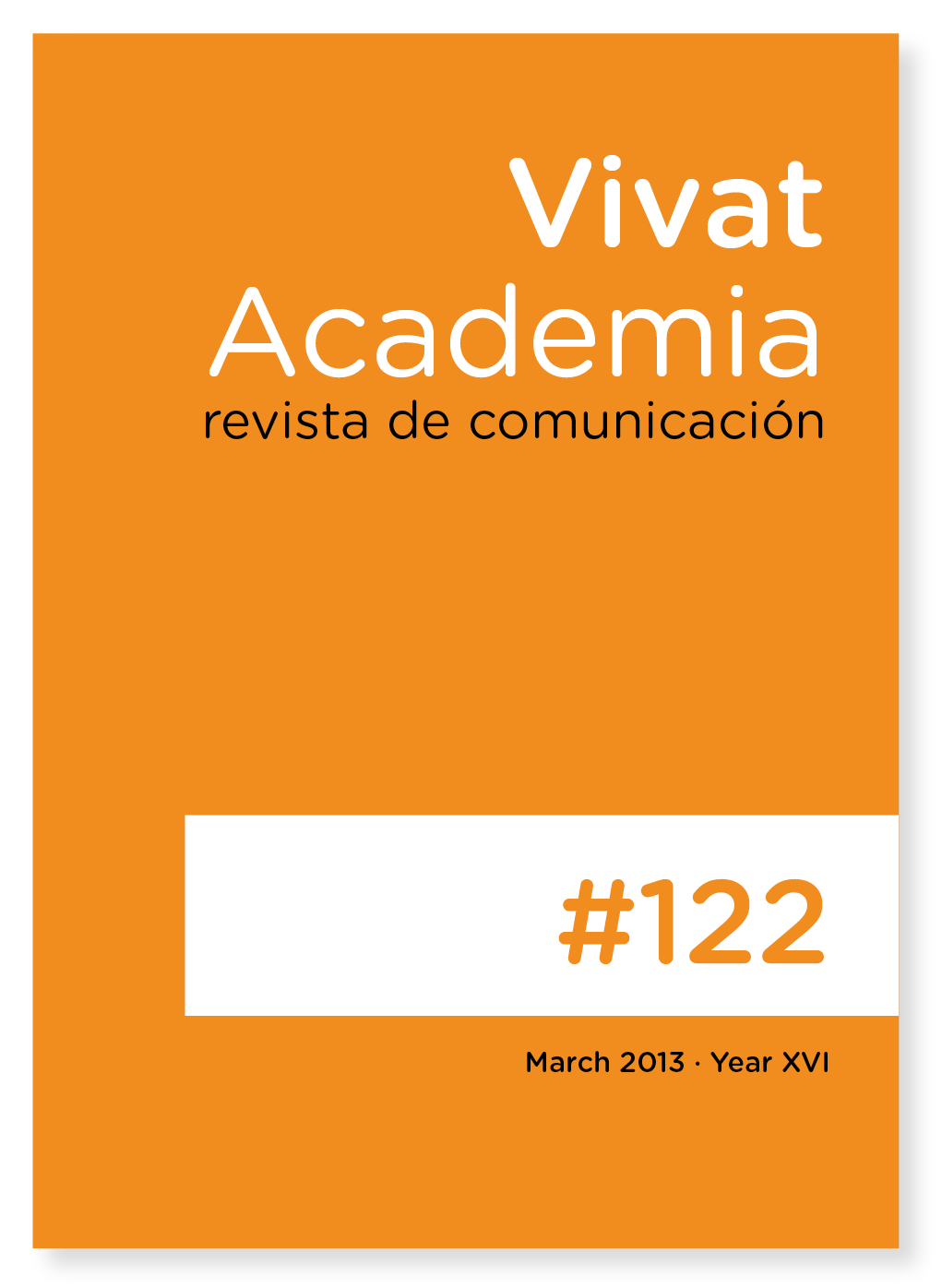The media professional in the cinema of recent years
Main Article Content
Abstract
Between 1930 and 1999, 77 films in which the journalist plays a central role were released in Spain. In the same period, the number of these titles, if we include those in which a media professional just appears, reaches to 703. Some authors speak of a genre or subgenre called cinema of journalists (or journalists’ cinema). Since 1975, we find several authors who analyzed the image of the reporter in films (Maxwell Taylor, Alex Barris, Juan Carlos Laviana, Richard Ness, Larry Langman, Loren Ghiglione or Joe Saltzman). These authors usually focus on flagship titles from the origins of cinema until the late 90's. In our study, we discuss the representation of journalists in some films of the last decade. We use content analysis and we combine the models of Professional Theory, the classification drawn by the journalist Juan Carlos Laviana and the one of Professor Joe Saltzman. The main objective is to determine if there are any dominant images, their characteristics, the question of other powers that appear alongside MCM and how the journalist relates with them. There are three main images in the five films analyzed: the pleasant journalist, the committed one and the manager. The executive, the economic, the judiciary and the security and police forces are also represented. In some cases the positive collaboration between authorities is shown and in other ones the displayed relationship in the film is negative.
Downloads
Article Details
References
Barris, Alex (1976). Stop the Presses! The Newspaperman in American Films. London: Thomas Yoseloff.
Bowman, William, Salawski, Edward, y Johnstone, John (1972). “The Professional Values of American Newsman”. En Public Opinion Quarterly, 36 (4), pp. 522-540.
Caminos, José María (1997). “Periodismo de filtración, periodismo de investigación”. En Zer, nº2, mayo, http://www.ehu.es/zer/zer2/9artcami.html
Chomsky, Noam y Herman, Edward (2001). Los guardianes de la libertad. Barcelona: Crítica.
De Sola Pool, Ithiel y Shulman, Irwin, (1964). “Newsmen´s fantasies, Audiences and Newswriting”. En Dexter, A. y White, H.D. (compiladores) People, Society and Mass Communication. New York: The Free Press of Glencoe, pp. 141-158.
Janowitz, Morris (1960). The Profesional Soldier. Glencoe: Free Press.
Jung, Carl Gustav (1971). Tipos psicológicos I y II. Barcelona: Edhasa.
Laviana, Juan Carlos (1996). Los chicos de la prensa. Madrid: Nickel Odeón.
Osorio, Olga (2009). La imagen de la periodista profesional en el cine de ficción de 1990 a 1999. La Coruña: Universidad de La Coruña. Tesis doctoral defendida el 9 de octubre de 2009.
Ortells, Sara (2009). “La mercantilización de la información: la nueva era informativa en televisión”. En Revista Latina de Comunicación Social. Tenerife: Universidad de La Laguna, nº 64, 2009, pp. 341-353,
http://www.revistalatinacs.org/09/art/28_827_46_ULEPICC_07/Sara_Ortells.html
Pizarroso, Alejandro (2008). “Justificando la guerra. Manipulación de la opinión pública en los conflictos más recientes”. En Comunicación: revista Internacional de Comunicación Audiovisual, Publicidad y Estudios Culturales, vol. 1, nº6, 2008, pp. 3-19.
Saltzman, Joseph (2002a). Introduction to the Image of the Journalist in Popular Culture. En IJPC, Ann Annenberg: University of South California (USC).
http://www.ijpc.org/uploads/files/ijpcintro.pdf
Saltzman, Joseph (2002b). Frank Capra and the Image of the Journalist in American Film. Los Ángeles: The Norman Lear Center, University of South California (USC).
Segovia, Ana Isabel (2004). “Repercusiones y cambios de las leyes de propiedad de medios de comunicación. El caso de Clear Channel Communications”. En ZER, nº 16, mayo, 2004, pp. 57-70.
Tunstall, Jeremy (1970). The Westminster Lobby Correspondents: A Sociological Study of National Journalism. Londres: Routledge & Kegan Paul.
Valbuena, Felicísimo (1997). Teoría General de la Información. Madrid: Nóesis.
VV. AA. (2009). Telerrealidad. El mundo tras el cristal. Sevilla: Comunicación Social Ediciones y Publicaciones.





